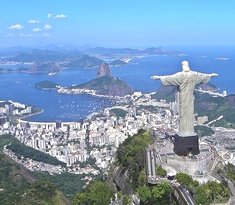|
Hint
|
Answer
|
|
A chain of islands
|
Archipelago
|
|
Narrow piece of land connecting two larger pieces of land
|
Isthmus
|
|
Area of low land usually between hills or mountains
|
Valley
|
|
Long, narrow inlet of the sea caused by glaciers
|
Fjord
|
|
Land surrounded by water on all sides
|
Island
|
|
A stretch of land surrounded by water on three sides
|
Peninsula
|
|
Electricity generated from the energy of water
|
Hydroelectricity
|
|
Weather patterns typical for an area over a long period of time
|
Climate
|
|
The state of the atmosphere at a place and time as regards heat, dryness, sunshine, wind, rain, etc.
|
Weather
|
|
Northeastern US into southeastern Canada; cold winters (blizzards) and summers get cooler the farther north you are, and Europe
|
Humid Continental Climate
|
|
Pacific coast of US; 100+ inches of rain; cool summers and damp winters;
|
Marine West Coast Climate
|
|
Long, muggy summers, mild winters; southeastern US; short, mild winters; year round rain
|
Humid Subtropical Climate
|
|
Dry areas, sparse plant life; often border deserts; dry, largely treeless grasslands; 10-20 inches of rain/year; hot summers, cool winters
|
Steppe Climate
|
|
Dry areas, sparse plant life; less than 10 inches of rain/yr; hot days, cold nights
|
Desert Climate
|
|
Hot and wet throughout the year; avg 80 degrees F.; 80+inches of rain/year; lush vegetation
|
Tropical rainforest climate
|
|
Southern tip of Florida; dry winters, wet summers; high year round temperatures
|
Tropical savannah climate
|
|
An inland grassland area (grasses can reach 12 feet high); common in the Great Plains
|
Prairie
|
|
Elevation above which it is too cold for trees to grow
|
Timberline
|
|
Climate zone closest to the polar regions; very cold; winter darkness and bitter cold last for half the year; indirect sun rays bring constant summer light but little heat; low bushes, very short grasses, mosses, and lichens
|
Tundra
|
|
What are the characteristics of a highlands climate?
|
Extremely Cold
|
|
Gradual warming of the earth and its atmosphere that may be caused in part by pollution and an increase in the greenhouse effect
|
Global Warming
|
|
Haze caused by the interaction of ultraviolet solar radiation with chemical fumes from automobile exhausts and other pollution sources
|
Smog
|
|
Producing just enough food for a family or a village to survive
|
Subsistence Farming
|
|
Farming organized as a business
|
Commercial Farming
|
|
Way of life of a group of people who share beliefs and similar customs (language, religion, and history of a people)
|
Culture
|
|
Rating system which includes income, education levels, food consumption, food production, population size, and population prediction.
|
Standard of Living
|
|
What makes up a culture?
|
Language
|
|
Religion
|
|
Social Groups
|
|
Government
|
|
Economy
|
|
What are the 3 factors that change cultures?
|
War
|
|
Trade
|
|
Migration
|
|
The process in which connections around the world increase and cultures merge
|
Globalization
|
|
Group of people that have a common language, history, and place of origin
|
Ethnic Group
|
|
What is the minimum population a mega city must have?
|
10 million
|
|
System of government that divides power between a national government and a state government
|
Federalism
|
|
Society based on equality in which workers would control industrial production
|
Communism
|
|
Form of government without a monarch in which people elect their officials
|
Republic
|
|
Any system of government in which leaders rule with consent of the citizens
|
Democracy
|
|
Rule by a king or queen is limited by laws and a constitution
|
Limited Monarchy
|
|
King or queen with complete and unlimited power to rule their people
|
Absolute Monarchy
|
|
System of government in which a small group holds power. Get power from wealth, military power, social position, or a combination of these elements.
|
Oligarchy
|
|
A government controlled by religious leaders
|
Theocracy
|
|
An economic system in which the means of producing wealth is privately owned.
|
Capitalism
|
|
Someone who flees or is forced to flee a country for their own safety.
|
Refugee
|
|
A person moving into one country from another
|
Immigrant
|
|
A person leaving a country to move to another
|
Emigrant
|
|
Something that would cause a person to leave a place ex: Natural disaster, political oppression, economy
|
Push Factor
|
|
Something that would cause a person to go to a new place: job opportunities, good climate
|
Pull Factor
|
|
The movement of people from place to place
|
Migration
|
|
The movement of people from rural areas to urban areas (countryside to cities)
|
Urbanization
|
|
Native to a place
|
Indigenous
|
|
A ban on trade by one country with another
|
Embargo
|
|
A tax on imports or exports
|
Tariff
|
|
The use of violence to create fear in a given population
|
Terrorism
|


I'm simply suggesting there be more acceptable type-ins.
I was fairly pleased with getting 144 though.